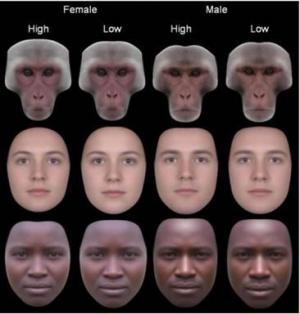The idea is that these traits advertise gene quality or other qualities, such as fertility. Another view is that the preference for these characteristics appears through sight and therefore does not involve any potential biological factors. The face certainly has the spouse's ability to advertise 'quality' and a way to verify this idea is to observe the internal relationships between these ' quality ads '.
 Researchers are currently collecting human conceptual data about facial beauty at http://www.alittlelab.com. This page also gives information about their work. (Photo: Science Library)
Researchers are currently collecting human conceptual data about facial beauty at http://www.alittlelab.com. This page also gives information about their work. (Photo: Science Library) In the work published in the May 7 edition of PLoS ONE, Anthony Little, University of Stirling and colleagues show symmetrical parameters and gender dimorphism from related faces in humans, both Europeans and African hunter-gatherers, and in primates are not human. Among all models, symmetrical men have a more balanced face proportion and proportionate females have more feminine face proportions.
Therefore, these findings support the claim that gender duality and facial symmetry are advertising signs for quality by providing evidence of a two-link biologic mechanism. This point in the development process. For example, individuals who can withstand disease can develop a balanced and bisexual gender. The work also shows that faces may advertise quality in different population groups and even in different primates.
 'Fine laughs' - Scary and painful torture in ancient times
'Fine laughs' - Scary and painful torture in ancient times The sequence of numbers 142857 of the Egyptian pyramids is known as the strangest number in the world - Why?
The sequence of numbers 142857 of the Egyptian pyramids is known as the strangest number in the world - Why? History of the iron
History of the iron What is alum?
What is alum? The face that inspired Santa Claus revealed for the first time
The face that inspired Santa Claus revealed for the first time  'Rebirth of the vampire': The mystery of the brick-mouthed remains of the 16th century
'Rebirth of the vampire': The mystery of the brick-mouthed remains of the 16th century  The 'face-changing AI' is hard to distinguish between real and fake
The 'face-changing AI' is hard to distinguish between real and fake  Danger from AI: Creating accurate faces with just voice
Danger from AI: Creating accurate faces with just voice  The universal face can 'crack' many identification systems
The universal face can 'crack' many identification systems  What is the most famous emoji in the world?
What is the most famous emoji in the world? 